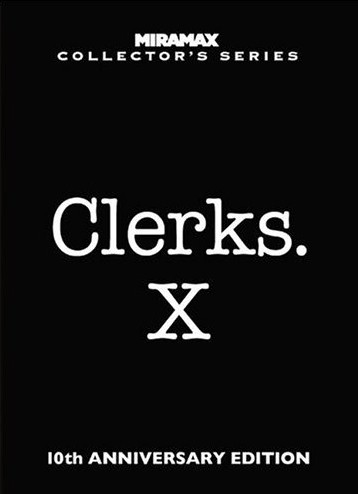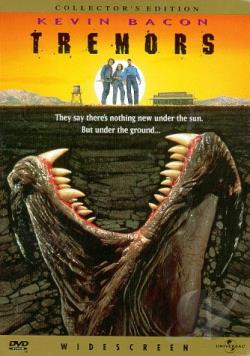Dir. Kevin Smith
Starring: Brian O’Halloran, Jeff
Anderson, Marilyn Ghigliotti, Lisa Spoonhauer"What kind of convenience store do you run here?”
Dante Hicks (Brian O’Halloran) is not having a good day. Woken up before dawn to fill in for a sick colleague at the Quick Stop Convenience store he has to face a whole host of indignities. Someone has blocked the locks of the roller shutters with gum meaning that they cannot be opened. He has to improvise a sign (‘I assure you, we’re open’) out of a sheet and shoe polish. He then smells of shoe polish all day. Smokers riot and pelt him with cigarettes. He discovers that while his girlfriend only slept with two men before him she had given blowjobs to 36. His friend Randal (Jeff Anderson) from the neighbouring video rental store seems determined to lose him all his customers. He only manages to make twelve minutes of roller-hockey practice before the ball is lost. An ex-girlfriend dies; Dante and Randal go to the viewing but Randal upsets the coffin. He gets hit with a $500 fine for selling cigarettes to a 4-year old. And the ex with whom he dreamed of getting back together accidentally shags a corpse in the staff bathroom. This leads to his current girlfriend dumping him. And as Dante bemoans “Do you know what the real tragedy about all this is? I’m not even supposed to be here today!”
So, as Randal asks, why is he?
Dante complains about the purposelessness of his dead-end job, but he refuses
to do anything to change his situation. He didn’t have to go in. He didn’t have
to keep the store open once his promised relief doesn’t turn up at noon. But he
does. Randal points out that his litany of woes makes him sound “like an asshole. Jesus, nobody twisted your
arm to be here today. You’re here of your own volition. You like to think the
weight of the world rests on your shoulders. Like this place would fall apart
if Dante wasn’t here. Jesus, you overcompensate for having what’s basically a
monkey’s job.” In other words, he has a martyrdom complex that would put
Joan of Arc’s to shame. He takes no action to change his life. Girlfriend
Veronica (Marilyn Ghigliotti) tries to convince him to return to college.
Randal tries to convince him to not give a shit. The contrast between
conscientious Dante who tries to be as professional and pleasant as possible
and Randal who does not care about his job could not be greater. Randal swans
in late, ignores his customers, shuts the store to go next door to talk to
Dante, abuses Dante’s customers, sells cigarettes to the four-year-old (yes, it
was Randal, not Dante), and then drives off to rent a hermaphroditic porn movie
(which he then watches in the Quick Stop) from a rival video store. This
prompts a discourse between the pair on the ethics of their profession, about
whether they have to compromise their own free will and personality because of
the profession they are in.
But it is not just with regards
to his job that Dante is unable to make a change. He is dating Veronica, but
his heart still belongs to his high-school girlfriend Caitlin (Lisa Spoonhauer)
- who cheated on him “8½ times”
during their relationship). And when she returns unexpectedly he is more than
willing to go out with her. But he won’t tell Veronica what he wants. It is
only once Caitlin has been traumatised by her inadvertent necrophilia and Silent
Bob (writer and director Kevin Smith) finally speaks that he finally realises
that he loves Veronica.
When looking for New Jersey
 |
| "I find your lack of chunky knitwear disturbing" |
What have I learnt about New Jersey
We do not see much of New Jersey
While we do not see the
waterfront Caitlin makes reference to going for a walk down on the boardwalk.
From the roofing contractor’s
comments it is at least a belief that mob bosses live in New Jersey
Can we go there?
Clerks was filmed in Leonardo, a town to the south of New York Bay . The Quick Stop Groceries
can still be found at 58 Leonard Avenue 59 East
Lincoln Avenue
Overall Rating: 3/5














